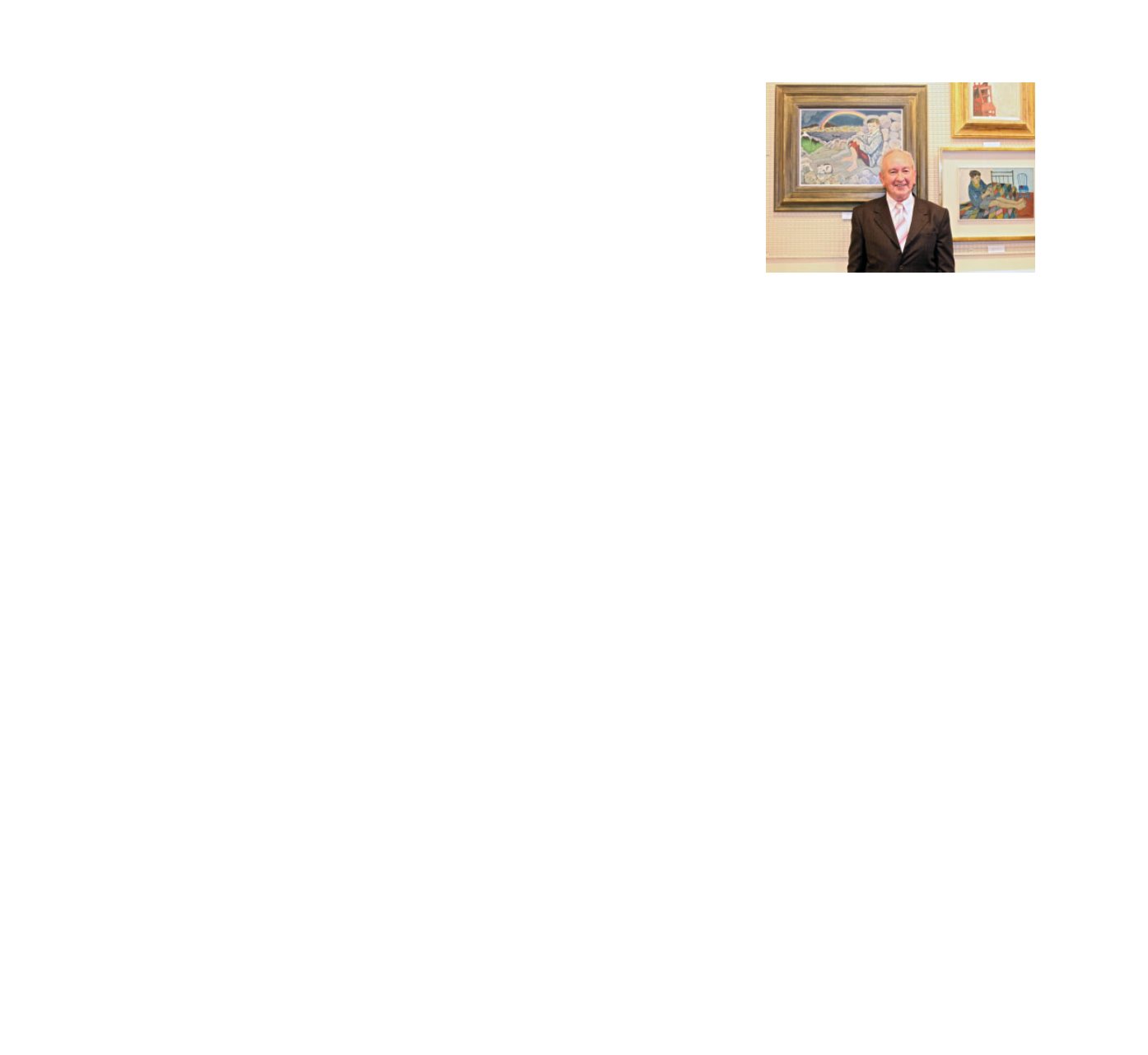
102
94
Gerard Dillon RHA RUA (1916-1971)
Tom Baker by the Black Lake
Oil on board, 46 x 61cm (18 x 24”)
Signed
Exhibited: “Gerard Dillon - Art and Friendships” Exhibition, Adams,
Dublin, July 2013 and The Ava Gallery, Clandeboye, August 2013, Cat. No. 47
Literature: “Gerard Dillon, Art and Friendships”, illustrated p.51
€30,000 - 50,000
Eager to follow George Campbell and Daniel O’Neill’s
success with their exhibitions in Victor Waddington’s gal-
lery, Dillon rented a cottage in Moyard in the West of Ire-
land to seek out subject matter in preparation for his first
exhibition with Waddington towards the end of 1950.
While staying at the cottage, Dillon became friendly with
his neighbours the Bakers, who supplied him with milk,
eggs and potatoes. The youngest of the Baker family, Tom
befriended the artist and posed for several paintings while
visiting the surrounding area, Tom Baker, Moyard (private
collection), The Yellow Bungalow, (Ulster Museum), and
this work, Tom Baker by The Black Lake.
Executed near Roundstone, the location may be “Lock
Creig Dhubh”, (The Black Lake), which is west of the vil-
lage. Known to the local fishermen, Dillon painted several
works from this shoreline looking over to Inishlacken Is-
land, where he rented another cottage adjacent to the ru-
ined National schoolhouse for his second solo exhibition
with Waddington in 1953.
Living most of his life in the urban environments of Lon-
don, Dublin and Belfast, Connemara’s landscape enthralled
the artist, who communicated his affinity with the daily
lives of the locals and western landscape in personal idio-
syncratic style that can appear whimsical but are often dis-
guised as another narrative. Dillon incorporated pictorial
devices to draw the viewer into his composition by distort-
ing the space and presenting it from a bird’s eye view or as
in this case, the viewer is drawn into the composition by the
sitter’s foreground position and direct gaze. A rainbow in
the distance highlights a fishing currach and white cottages
in a patchwork of fields. The dark sky, complexion of the
sitter, jacket and clenched hands indicate the time of year.
The youngest of nine children from the Falls area of Belfast,
Dillon’s 1950’s images of the West were not always favoured
by art critics. Pigeon holed as painting Ireland through the
eyes of a visitor, he responded in letter to his friend, John
Hewitt … “I think they haven’t thought it over or they’d
realize that that part of Ireland that I’ve painted, is to me
strange and I do see it as a visitor-for could your honestly
call me an Aran Islander? Or am I a gawkey visitor? After
all I was “brung” up looking at awful old dirty red bricks
and cobbles or pavers and mill chimneys…seeing that all
the days of my young life…so I am a visitor to the west …”
Throughout the artist’s changing styles in the late 1950’s,
and 1960’s, his compositions continued to depict symbols
of Connemara, reflecting his memories of the region where
he claimed, ”One could live …forever.”
Karen Reihill is currently researching Gerard Dillon &
Friends
Tom Baker at Adams July 2013


